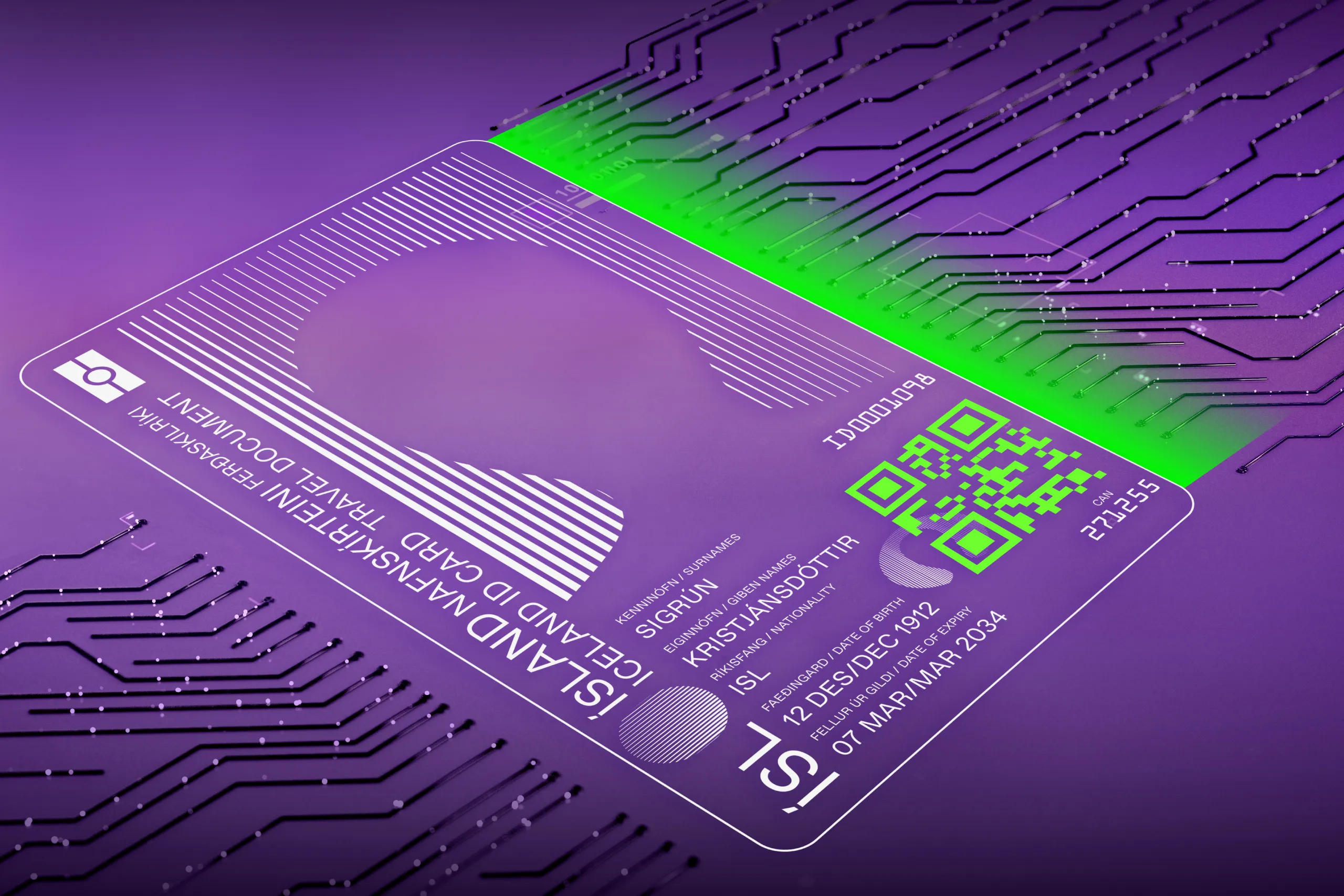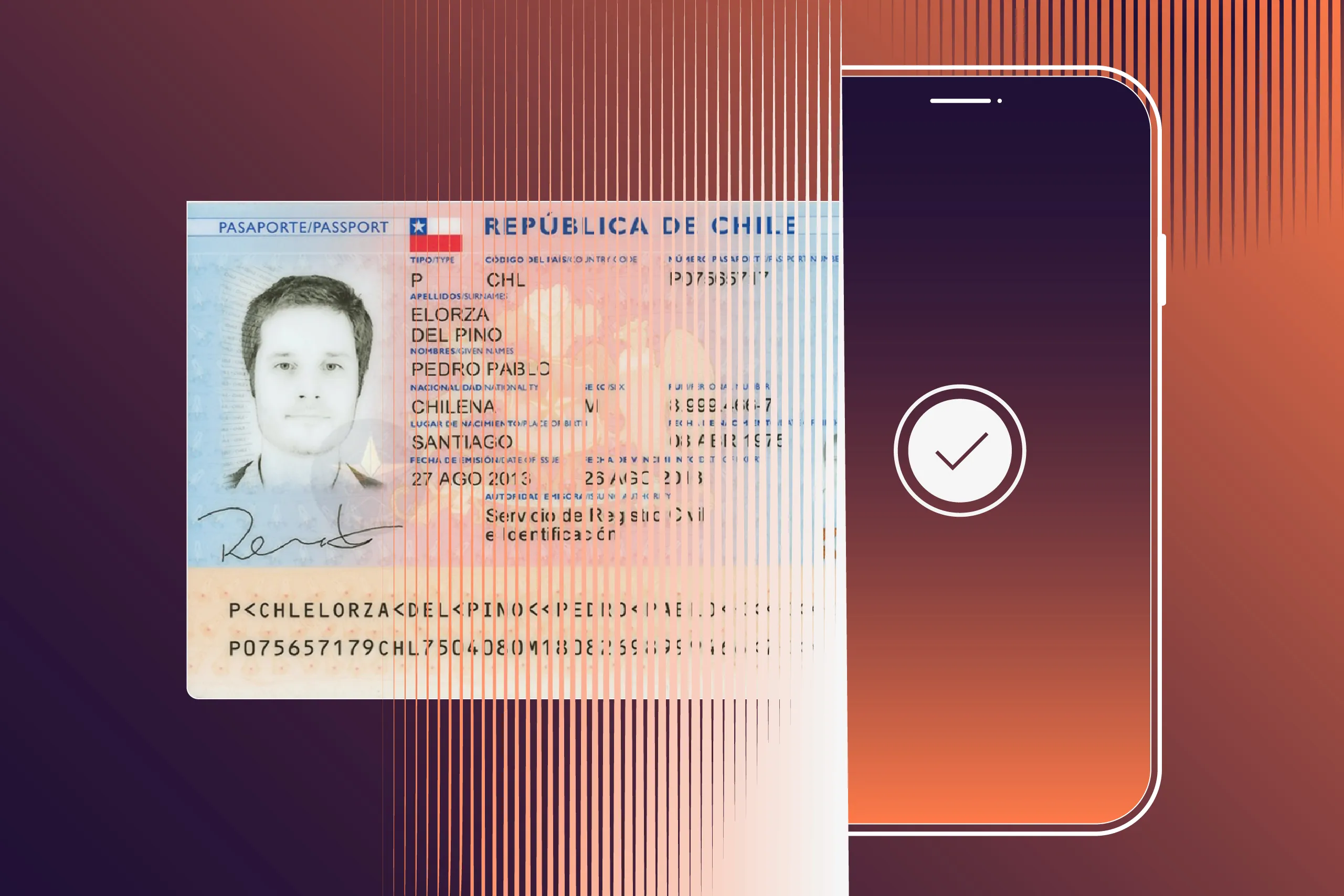When you search online for facts about Argentina, you’re likely to encounter the expected results: tango, silver exports, yerba mate, beef, El Pato, and diverse wildlife, to name a few.
Interestingly, this last point also applies to Argentina’s identity documents. Let’s explore them in detail.
The challenges of processing Argentine IDs
As a federation of 23 provinces and one autonomous city, Buenos Aires, Argentina issues three main types of identity documents: passports, identity cards, and driver’s licenses.
What challenges do companies face when verifying them online?
Passports with various nationalities and fingerprints
The Argentine passport, primarily used as a travel document, has seen multiple updates over the past decade.

As a member of MERCOSUR, Argentina issues passports (shown above is the 2019 series) with the corresponding MERCOSUR inscription on the cover, similar to those issued by Brazil, Paraguay, and Uruguay.
Since 2012, it has been issued as a biometric document with an RFID chip containing data from the visual inspection zone (VIZ) and the holder’s photo. IDV solutions like Regula Document Reader SDK can read the chip and compare this photo with the one in the VIZ.
The biometric passport has been updated three more times: in 2014, 2019, and 2022. Each version differs in design and security features.

Since the launch of the biometric series in 2012, the evolution of the Argentine passport has included gradual updates to its design and security features. All the versions (including the latest 2022 series) feature a non-polycarbonate personal data page.
For instance, the 2014 series, shown here with a specimen from 2017, includes a bright, prominent hologram in the top right corner. This was updated in 2019, along with the addition of a hologram over the holder’s portrait, which makes online passport scanning challenging due to intense glare.


The personal data pages in Argentine passports from 2017 (top) and 2019 (bottom) feature intricate holograms that often produce glare during online document scanning.

Notably, the UV feature in the Argentine passport doesn't change across different series.
The document’s VIZ also includes the bearer’s fingerprint in both child and adult passports. Notably, minors’ passports have a five-year validity, while regular passports are valid for 10 years.
The data contained in Argentine passports is typical for identity documents, including the holder’s name, date of birth, and personal number. Earlier series also included details like passport copy number, marital status, and police registry number.

The 2009 passport series included additional data fields, such as marital status and a copy of the document. This example represents a document issued for the first time.
All this information in the VIZ appears in Spanish and English, while the passport message is additionally provided in Portuguese and French.
An intriguing part of the Argentine passport is the Nationality field, where not only “Argentina” appears, but also other countries. This reflects Argentina’s relatively open immigration and citizenship policies. For example, in general, foreigners can naturalize as Argentine citizens after two years of residence, and all children born in the county automatically acquire Argentine nationality at birth.
A variety of ID cards with a “shining” hologram
The passport isn’t the primary identity document for Argentine residents; this role belongs to the national identity card, or Documento Nacional de Identidad (DNI).

The DNI (shown here is the 2020 series) is used as a domestic identification document and as a travel document to South American destinations, primarily Spanish-speaking countries.
These cards are widely used for voting, digital payments, and other identity verification purposes. One reason for their popularity is that the DNI is mandatory for all Argentine residents, including non-citizens. Notably, Argentina doesn’t issue separate residence permits.
The DNI also serves as a travel document to all MERCOSUR member countries, as well as Chile, Peru, Venezuela, Ecuador, and Colombia.
Argentine national identity cards have been updated even more frequently than passports, with new series released in 2009, 2012, 2014, 2019, 2020, 2023, and 2024 (not yet issued). Importantly, all of these series remain in circulation.
The document issued between 2009 and 2012 differs significantly in both design and layout. This Argentine ID card, made from plastic and featuring a passport-like pattern, has a machine-readable zone (MRZ) that doesn’t align with the document’s dimensions. This inconsistency requires specific algorithms in the IDV solution to accurately parse non-standard MRZs.

The DNI issued between 2009 and 2012 contains a non-standard MRZ, making verification more complex.
The Argentine ID card provides many details about the holder in Spanish, with some fields also presented in English. The data on the front side includes:
Photo
Name
DNI number: A unique 8-digit personal number, also included in the passport. For DNI numbers under 10,000,000, initials may be added.
Sex: Interestingly, the options include not only F (female) and M (male) but also X as a third gender option.
Nationality
Date of birth
Date of issue and expiration
Signature: If the individual is unable to sign, this field may display “NO FIRMA” (NO SIGNATURE).
Donor status (for adult cards): Indicates “Sí” (yes) or “No” (no) to show whether the holder has declared to be an organ donor.

To obtain a DNI, the holder must be at least five years old. Children’s cards don’t include the donor status field.
The DNI also includes a PDF417 barcode that contains all data from the VIZ, along with a hologram over the portrait. This security feature can make online document scanning via the user’s mobile device difficult. Therefore, IDV solutions should provide clear instructions to customers on how to properly scan their ID cards. Also, image quality assessment can be helpful in these cases.
Identity cards for former combatants of the Malvinas Islands War feature the inscription “EX COMBATIENTE, HÉROE DE LA GUERRA DE LAS ISLAS MALVINAS” (“EX-COMBATANT, HERO OF THE MALVINAS ISLANDS WAR”) in the top right corner. In the 2023 series, this inscription was redesigned, and gender identity was incorporated: héroe for men and heroína for women.

Former combatants of the Malvinas Islands War have specific inscriptions on their DNIs, updated in 2023 to reflect gender.
On the reverse side, the DNI includes a standardized MRZ, a fingerprint (like in the passport), place of birth, and, for minors, the parents’ names.

The content on the reverse side of the DNI may vary depending on the holder’s age and citizenship. For example, the document of a naturalized citizen includes the court number and date of naturalization.
Typically, DNIs are updated at ages 8 and 14, and then every 15 years. This results in various document series currently in circulation. To recognize all of them, an IDV solution must have an up-to-date document template database.
Additionally, there is a new version of the biometric DNI from 2024 that has not yet been issued.

The newest 2024 series of the Argentine identity card has not yet been released. This version features an updated layout and design, braille support, and enhanced security features, including ghost portraits and a DataMatrix code.
Driver’s licenses with different validity
Argentine driver’s licenses come in various classes and subclasses for different types of vehicles, with the license class indicated in a dedicated field on the front. This identity document can also be used beyond the country, as Argentina has agreements for license recognition and exchange with Bolivia, Chile, and Columbia.
Since 2013, a standardized design has been applied across all 23 provinces and Buenos Aires, with the issuing territory specified at the top of the front side. All driver’s licenses include data in Spanish and English.

The types of vehicles an Argentine driver’s license holder is permitted to drive depend on the license class. For example, class A3 authorizes driving tricycles and cabined quadricycles, while class B2 covers automobiles, trucks, vans for private use, and motorized mobile homes.
The document includes typical information, such as the holder’s name, document number, address, date of birth, and date of issue. Depending on the driver’s age and the license class, the document can be valid for one to five years, with shorter terms generally applying for minors (under 17) and seniors (over 71).
On the reverse side, there are two barcodes—CODE128 and PDF417—as well as donor status, blood type, and details about the license classes for different vehicle types.

The barcodes on the reverse side of Argentine driver’s licenses contain data from the VIZ.
Digital driver’s licenses in Argentina
Since 2019, drivers in Argentina have been able to obtain a digital version of the national driver's license. Stored on the holder’s mobile phone, the digital license is represented by a QR code backed by digital signatures. Through the app, drivers can access license details, check the status, book appointments for renewals, and receive expiration reminders.
However, as the National Road Safety Agency (Agencia Nacional de Seguridad Vial) states, digital licenses are intended to complement—not replace—the physical document. During traffic checks, Argentine residents must still carry their physical driver's license for verification.
How to effectively process Argentine IDs
Argentine passports, national ID cards, and driver’s licenses generally align with ICAO standards and include common security features, without non-Latin alphabets or handwritten data like in IDs from Myanmar.
To ensure your IDV solution can effectively verify Argentine IDs, consider these key aspects:
Fine-tuned document scanning: The bright holograms on passports and ID cards, as well as non-contrast background patterns on driver’s licenses and DNIs, complicate scanning. Additionally, it’s essential to capture data accurately, especially letters with diacritic marks—ñ, á, é, í, ó, ú, and ü—which may blur photos without proper focus. Onboarding guidance, along with advanced capture features, where the system selects the best shot automatically, can reduce retakes and abandonment.
Extensive ID template database: Frequent updates to Argentine IDs mean that new templates must be added promptly. At Regula, we currently maintain over 16,000 templates from 254 countries and territories, with this number continually growing.
Authenticity checks for machine-readable data: While Argentine domestic documents include various barcodes and MRZs, it’s crucial to accurately recognize and read these elements.
Spanish localization: Offering identity verification in a language familiar to the user enhances the experience. In Argentina, a Spanish interface can significantly increase IDV accessibility, especially outside tourist areas, where fluency in English is less common.
As always, Regula is here to support you in creating a smooth, secure IDV process. Learn more about what’s possible with our fully customizable solutions.





